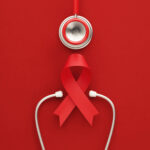Numbers have been falling for 10 years, thanks to the efforts of the MSM community. But transmission in other groups has risen.
Despite Australia’s world-leading reductions in HIV cases in men who have sex with men, minor increases in transmission among heterosexuals, drug injectors and Indigenous people have arrested the 10-year decline.
“In order to continue our world-leading response to HIV, we need to increase access to testing, treatment and prevention equitably, across all areas of need,” said Dr Skye McGregor, head of the Surveillance Innovation Research Group at the Kirby Institute at UNSW.
According to data released by the Kirby Institute, new diagnoses of HIV plateaued at 555 in 2022, up 14 cases from 2021 – although some of those diagnoses may have been delayed by the pandemic.
Although the bulk of new cases remained among men who have sex with men (57%), new diagnoses in this group have halved over the decade.
“We can see the impact of prevention strategies like increasing HIV testing, treatment as prevention, and pre-exposure prophylaxis particularly among gay and bisexual men, for whom new diagnoses have been dropping significantly since 2014,” said Dr McGregor.
But increased cases numbers were seen via heterosexual sex – accounting for around a third of cases – and within needle-sharing communities.
“These data suggest that to eliminate HIV, there needs to be increasing focus on prevention strategies that encompass all populations, including heterosexual men and women, particularly as we all begin to travel more following the relaxing of covid-19 control measures. This includes safe-sex travel campaigns and regular sexual health checkups which include HIV testing,” said Dr McGregor.
Increases in new cases were also seen among Indigenous populations.
“We know that Aboriginal and Torres Strait Islander people face additional barriers to accessing prevention and care. People in rural and remote communities were also more likely to have their regular health activities impacted by the covid-19 pandemic. Co-designed campaigns rolled out in partnership with local community organisations are needed, focused on testing, treatment, and PrEP,” said Robert Monaghan, Manager of Aboriginal and Torres Strait Islander Health research at the Kirby Institute.
Despite 2022’s concerning increase, Dr McGregor said that with numbers of new cases of HIV as low as they currently are, yearly fluctuations were inevitable. She also pointed to the lack of testing during covid as a signifier that minor increases could be the catch-up effect of returning to regular testing and in person healthcare.
Accordingly, 44% of diagnoses in 2022 were labelled late, meaning those diagnosed may have been living with HIV for four or more years.
“The number of late diagnoses is concerning and should serve as a timely reminder that anyone who is sexually active should have regular sexual health checkups, including a test for HIV,” said Dr McGregor.
Concerns aside, Dr McGregor heralded that, “the 2022 data show that Australia is tracking well towards the elimination of HIV transmission”.





